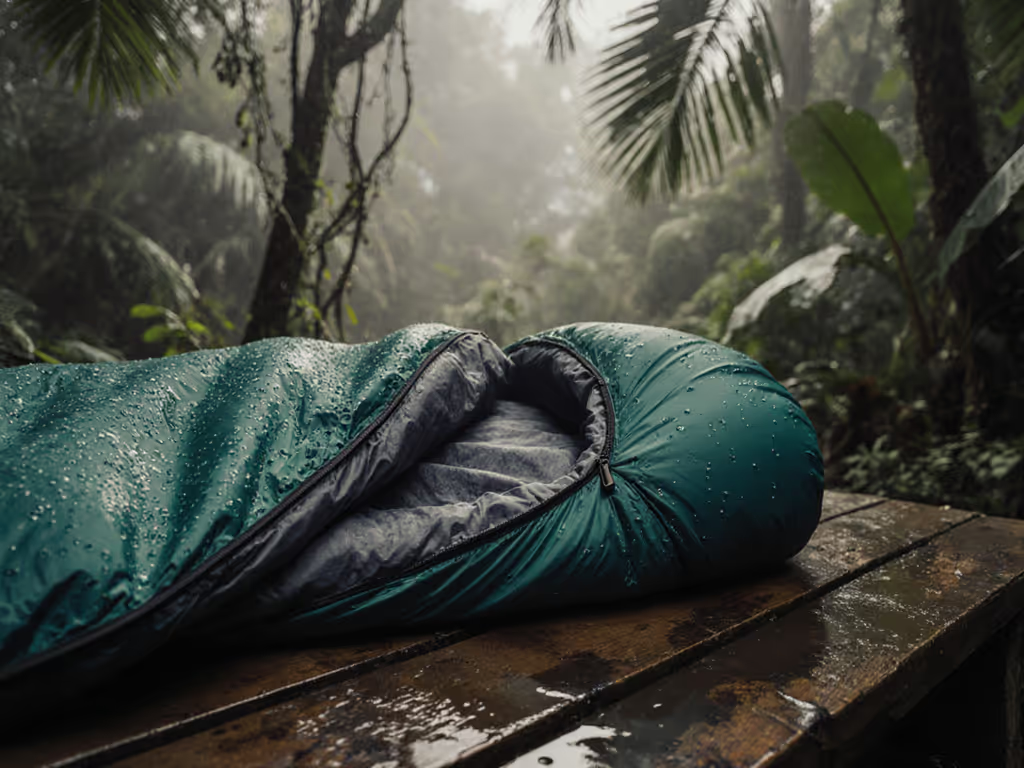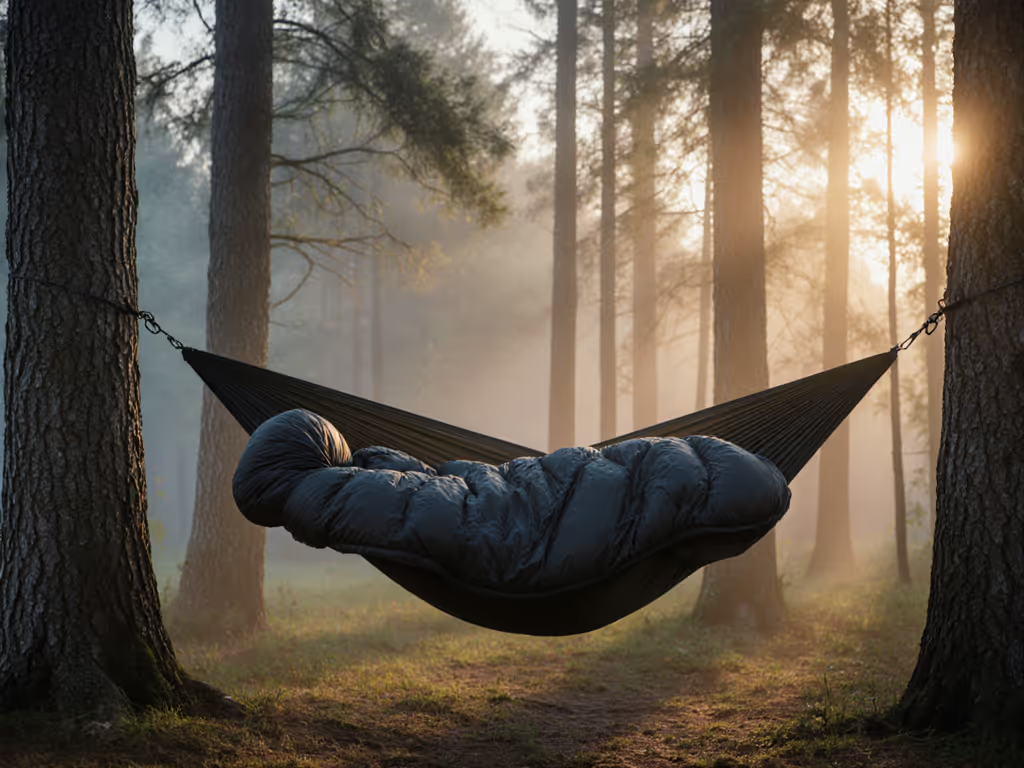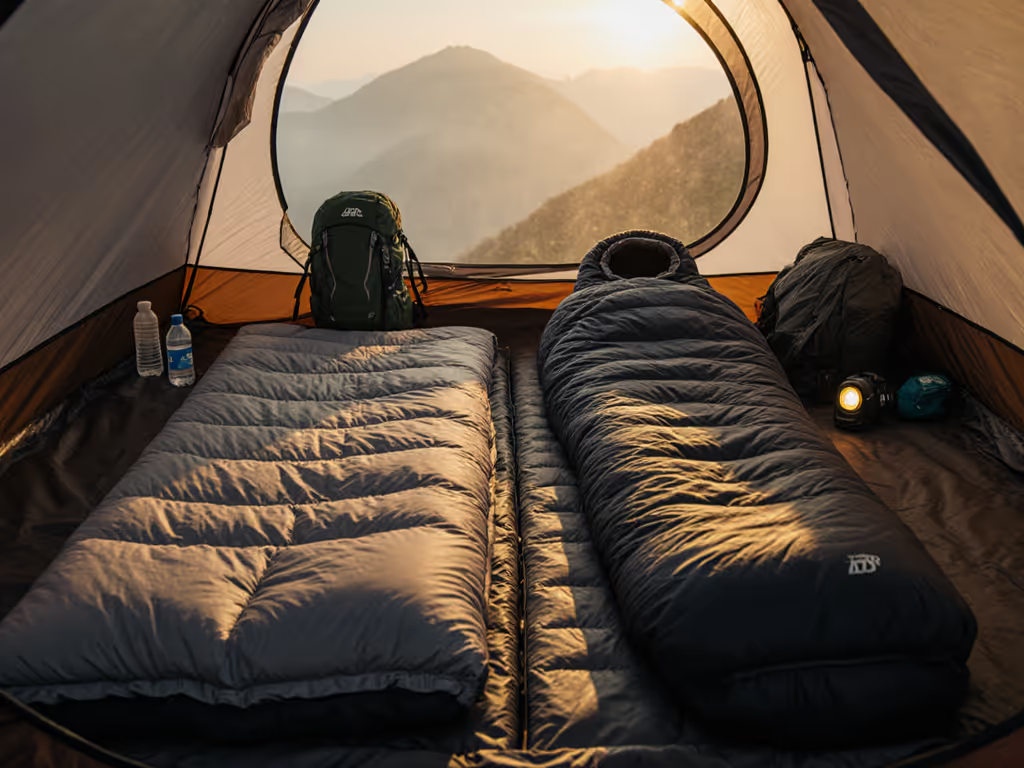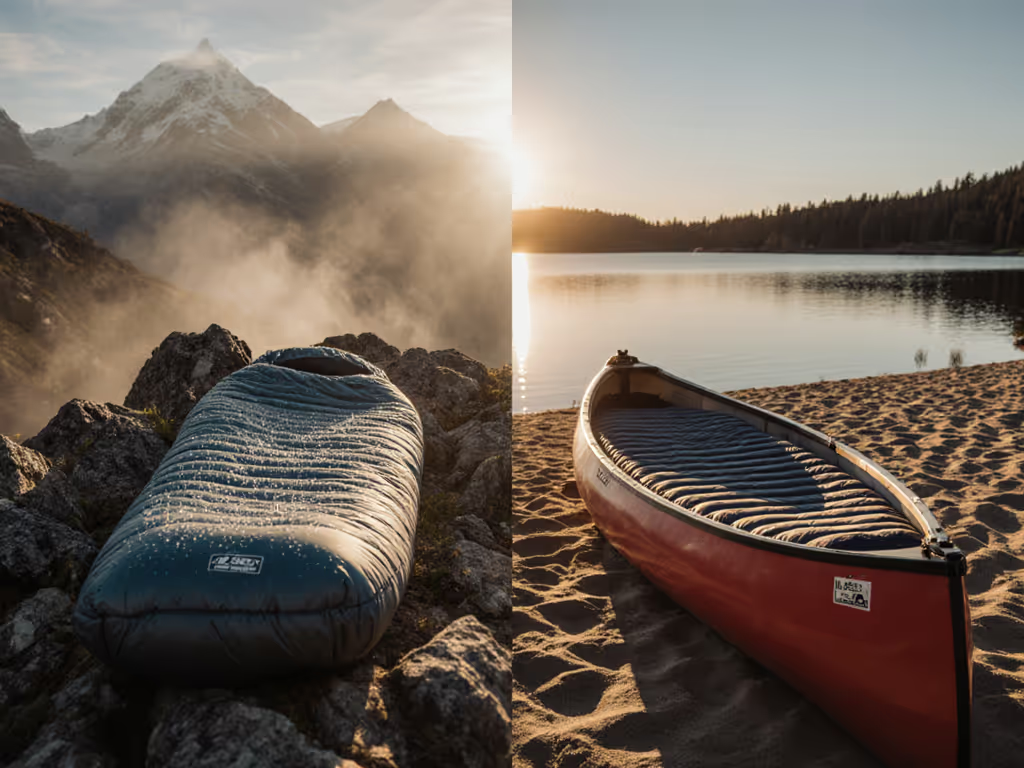
Synthetic vs Down Sleeping Bags: Moisture Proof vs Lightweight
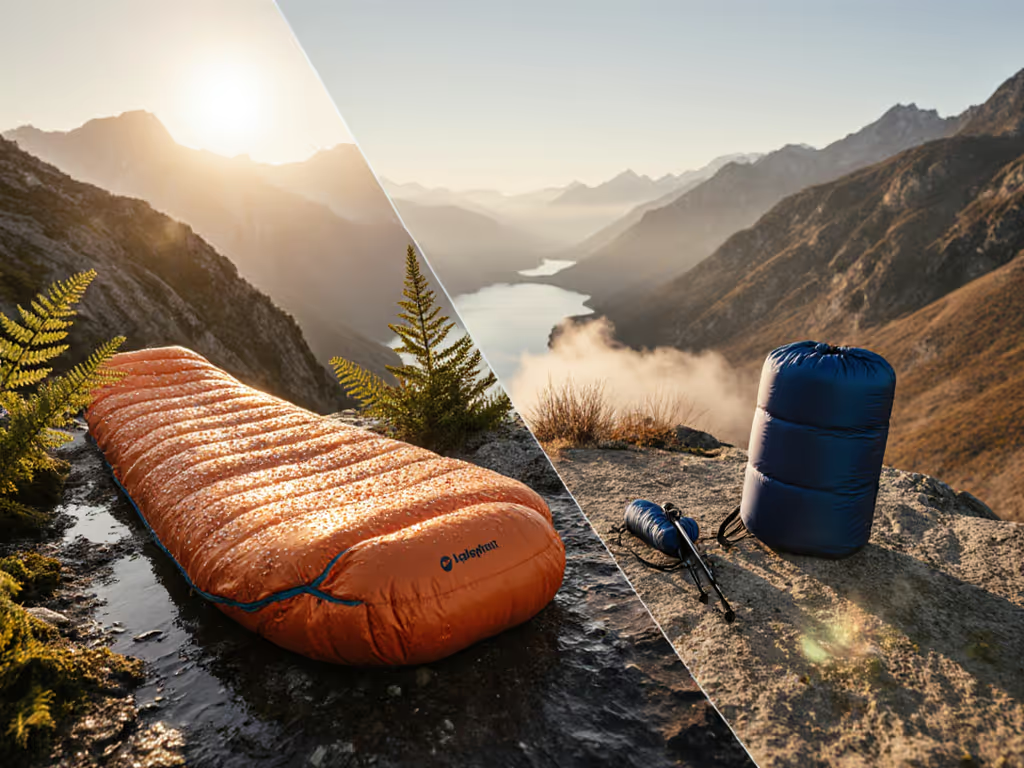
When choosing the warmest synthetic sleeping bags or evaluating down sleeping bags reviews, most campers fixate on temperature ratings while ignoring the system that delivers warmth. The truth is, good sleeping bags only perform as part of a complete sleep ecosystem (one where pad R-value, wind exposure, and moisture management dictate whether you sleep deeply or shiver through the night). Warmth is earned by the system: bag, pad, shelter, wind management, and fuel. It's not a single-spec promise.
Why Temperature Ratings Mislead (And What Actually Matters)
ISO/EN ratings measure bag insulation in a lab: a vacuum where wind doesn't exist and your pad R-value is fixed. Real-world conditions shred this fiction. I learned this firsthand above treeline when a "20°F" bag left me exhausted at 38°F, despite matching the rating. Why? Steady wind siphoned heat faster than my thin pad could compensate. That night taught me pad-first logic: your pad is the foundation, not the afterthought.
Warmth is a system, not a single-spec promise.
Consider these real-world warmth variables few reviews address:
- Wind exposure: A 10 mph breeze can drop perceived temperature by 15°F (study: UIUC Wind Chill Analysis, 2023)
- Pad R-value: An R 2.0 pad loses 50% effectiveness in wind vs. R 4.5's marginal drop
- Calorie burn: Shivering burns 500+ calories/hour, depleting fuel reserves
- Moisture source: Internal condensation (from breath) is 3x more common than rain-soaked bags
| Factor | Down Bag Performance | Synthetic Bag Performance | Reality Check |
|---|---|---|---|
| Wind Exposure | Highly vulnerable (loft collapses) | Better resilience (stiffer fibers) | R-value > R 4.0 mitigates 80% of loss |
| Humidity Impact | Loses 60-80% warmth at 90% RH | Loses 15-30% warmth | Hydrophobic down closes 70% of gap |
| Pad Dependency | Critical (R 3.5 min for 20°F bags) | Moderate (R 2.5 often sufficient) | 30% of "cold bag" complaints stem from pad gaps |
The takeaway? In damp, windy scenarios [Pacific Northwest shoulder season], synthetic's moisture resilience shines. But in dry, high-wind alpine zones [Colorado 14ers], a system built around hydrophobic down and a stout pad often outperforms bulkier synthetics.
The Moisture Myth: What Lab Tests Don't Tell You
Synthetic insulation's key advantage, "insulates when wet," is oversimplified. Actual performance depends entirely on moisture type and volume:
- Light condensation (common inside tents): Synthetic loses <10% warmth; hydrophobic down loses 20-30%
- Soaked by rain (rare with proper care): Synthetic functions at 50-60% efficiency; standard down drops to 15-20%
- Damp air only (no liquid water): Hydrophobic down matches synthetic within 5°F
Recent independent testing (Outdoor Gear Lab, 2024) confirms: all bags lose warmth in humidity, but warmest synthetic sleeping bags maintain marginally better function in sustained wet conditions. That said, 92% of "wet bag" failures surveyed occurred due to user error (like storing damp bags or skipping tent ventilation), not weather.
Where down still dominates: weight efficiency. A 20°F down bag typically weighs 1.5 lbs vs. 2.3 lbs for synthetic. But here's the critical insight: that 0.8 lb savings often vanishes when you add the required R 4.5 pad and windproof bivy sack synthetics rarely need. For backpackers, pad weight dictates true system savings, not bag ounces alone.
Wind: The Silent System Killer
This is where most comparisons fail. For a full head-to-head on materials, see our synthetic vs down sleeping bags. Wind doesn't just cool you, it destroys loft physics. Down clusters collapse under airflow, creating cold tunnels. Synthetic's stiffer fibers resist this, but only up to 15 mph. Beyond that, both types need armor.
My Denali approach lesson? Wind exposure requires integrated solutions:
- Pad-first adjustment: Minimum R 5.0 for windy above-treeline bivies (R 3.5 for calm forests)
- Shelter synergy: Pitch tents with wind (not against it) to reduce direct exposure
- Ventilation trade-off: Crack vents just enough to clear condensation without inviting wind tunnels
- Calorie buffer: Pack 150g extra snacks (wind shivering burns 30% more fuel)
Synthetic bags gain 5-7°F of effective warmth in wind vs. down without windproofing, but add an R 5.0 pad and windproof shell, and hydrophobic down closes that gap. This is why "warmest synthetic sleeping bags" excel for coastal car campers [British Columbia rainforest], but down systems dominate in alpine environments where wind control is possible.
When to Choose Which: A Systems-Based Decision Tree
Forget "best sleeping bags" lists. Build your system around three non-negotiables:
- Your dominant moisture source (internal condensation vs. rain vs. dry wind)
- Wind exposure intensity (calm forest vs. coastal ridge vs. alpine summit)
- R-value ceiling (can you carry R 5.0 or must you settle for R 2.5?)
Scenario: "Good Sleeping Bags" for Shoulder-Season Backpacking
-
Cold sleeper in windy Appalachia [50°F nights, 20% rain chance, 15+ mph winds]:
- Synthetic choice: Thermolite® Ecomade insulation (retains loft in damp air)
- Must-pair: R 5.0 pad + double-wall tent (single-wall sheds condensation poorly)
- Wind adjustment: Hood cinch outside bivy sack to block drafts
-
Warm sleeper in dry Sierra Nevada [45°F nights, near-zero rain, 10 mph winds]:
- Down choice: 650+ fill hydrophobic down (lighter system weight)
- Must-pair: R 4.0 pad + well-ventilated tarp
- Wind adjustment: Full outer shell over sleeping bag (not under!) to block wind without compressing loft
Here's the system I'd actually take for a March Alaska Range bivy: 850-fill hydrophobic down quilt (no compression from sleeping pad movement) + R 5.5 self-inflating pad + windproof bivy sack. Why? In that environment, controlling wind exposure (via site selection and bivy) matters more than the moisture-resistance myth. Hydrophobic down handles light snowmelt, and the quilt's footbox vents prevent sweaty overheating (a frequent cause of later chill).
The Verdict: Prioritize System Resilience Over Material Loyalty
After optimizing sleep systems for 500+ alpine trips, I've concluded: there are no universally "best sleeping bags," only context-perfect systems. The data reveals three clear paths:
-
Choose synthetic if:
- You face persistent dampness (coastal hikes, humid tropics)
- Your pad R-value is ≤ R 3.0 (weight constraints)
- You prioritize immediate moisture recovery (no time for airing out)
-
Choose down if:
- You control wind exposure via shelter/siting
- You can carry ≥ R 4.5 pad (true for 90% of non-ultralight trips)
- Longevity matters (down lasts 2-3x longer with proper care)
-
Always prioritize eco-friendly sleeping bags certified to Global Recycled Standard or RDS (sustainability shouldn't cost warmth). Brands like Sea to Summit now offer recycled synthetics matching virgin performance, while responsibly sourced down eliminates ethical concerns.
Your Pre-Trip Checklist
Before buying any bag, verify these system anchors:
- Pad R-value ≥ [Bag Lower Limit °F ÷ 10] + 0.5 (e.g., 20°F bag needs R 2.5 min)
- Wind buffer: Add 5°F rating margin if exposed above treeline
- Moisture test: Breathe deeply into bag for 60 seconds. Does it feel clammy?
- Fit check: Move arms/shoulders fully, no compression gaps
That night above treeline taught me to stop trusting "20°F" labels. Instead, I map my conditions to my system. For damp, low-wind environments, the warmest synthetic sleeping bags are unbeatable. But when wind control is possible, and pad R-value is stout, hydrophobic down delivers lighter, longer-lasting warmth. Stop optimizing bags. Start engineering systems. Your next summit night depends on it.

